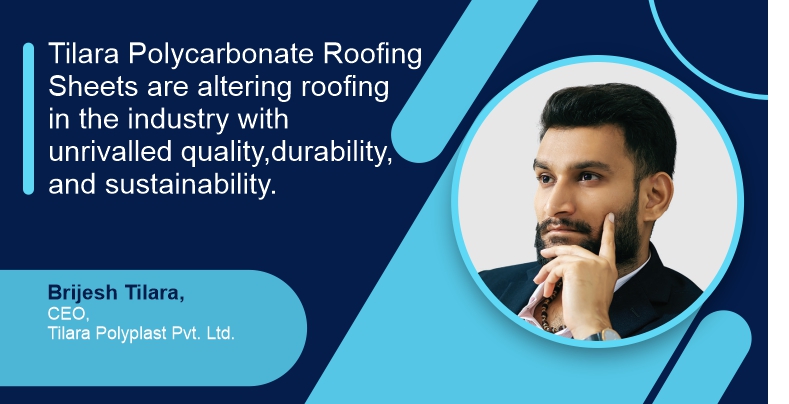Maharashtra Pollution Control Board
By Edit Team | March 16, 2009 6:30 am SHARE

Know about Maharashtra Pollution Control Board
(Environment Department, Govt. of Maharashtra, India)
MPCB is one of the most appreciated controlling authority in India today. Here is all what you need to know about this successful environment player
Vision Statement: Improvement in the Board’s functional efficiency, transparency in operations and adequate response to the growing needs of environmental protection & sustainable development in the State of Maharashtra
MPCB
Maharashtra Pollution Control Board was established in the year 1970 by the name Maharashtra Prevention of Water Pollution Board under the provisions of Maharashtra Act 1969. Apart from being a leader in industrialization, Maharashtra, thus has the distinction of being the first state in India to promulgate legislation on water pollution in the country. Mr. N. A. Lentin who was instrumental in preparing status report on water pollution in the state and prepare the draft Prevention of Water Pollution Control Act was made the first Member Secretary of the state.
Mr. Lentin was a visionary and authored draft bills on other related Acts such as The Motor Vehicles Act and Smoke Nuisance Act and established the first laboratories for monitoring pollution in the country.
The Water (Prevention & Control of Pollution) Act, 1974 promulgated by Government of India was adopted in Maharashtra in June 1981 and Board was renamed as “Maharashtra Pollution Control Board”.
The Board is entrusted with the implementation of various environmental legislations viz. The Water (Prevention & Control of Pollution) Act, 1974, The Air (Prevention & Control of Pollution) Act, 1981 and umbrella Act: the Environment (Protection) Act, 1986 and rules made there under in the State of Maharashtra.
The activities of the Board include prevention and control of Water, Air and Noise Pollution, Hazardous waste Management, Hazardous Chemicals Management, Municipal Solid Waste Management, Bio-Medical Waste Management. The thrust has been to control pollution from point sources (industries and other activities) by enforcing legislative provisions and through monitoring checks on performance evaluation. On an area/regional basis the thrust has been to support development of state-of-the-art infrastructure such as establishment of Common Effluent Treatment Plants (CETPs), Common Hazardous and Biomedical Waste Treatment Facilities, Secure Landfill for Municipal Wastes etc. The Board has several state-of-the-art laboratories in each administrative Region to monitor pollutants generated.
Ms. Valsa Nair Singh (IAS), the Secretary – Environment, Government of Maharashtra is holding the charge of Chairperson of the Board. Under her able guidance, the board is functioning effectively in carrying the mandate entrusted under its constitution.
At present, Shri. Sanjay Khandare (IAS), is the Member Secretary of the Board. He is a 1996 batch Indian Administrative Service (IAS) Officer. He is B.Tech in Agriculture Engineering with Post Graduation (M. Tech) in Industrial Engineering. His dynamic leadership and wise consul guide officers of the Board to retain their exemplary record in environmental protection.
Composition Of Board
Chairman: A person having special knowledge or practical experience in respect of matters relating to environment protection or a person having knowledge and experience in administrating institution dealing with the matters aforesaid (part time)
Representative of State Government (not exceeding five)
Representatives of Local Bodies (not exceeding five)
Representative of Companies or Corporation of State Government (two)
Representative of interest of Agriculture, Fishery or Industry or Trade etc. (not exceeding three)
Member Secretary: Full time Government Official
Implementation of environment laws:
Maharashtra Pollution Control Board (MPCB) is implementing various environmental legislations, Rules & Notifications issued by Govt. of India andGovt. of Maharashtra in the State of Maharashtra, which includes:
Water (Prevention & Control of Pollution) Act, 1974
Water (Prevention & Control of Pollution) Cess Act, 1977
Air (Prevention & Control of Pollution) Act, 1981
Environment (Protection) Act, 1986 Environnent (Protection) Rules, 1986
Hazardous Waste (Management, Handling & Trans boundary movement) Rules, 2008
Manufacture, Storage and Import of Hazardous Chemical Rules, 1989
Manufacture, Storage, Import, Export & Storage of Hazardous Microorganisms Genetically Engineered Organisms or Cells Rules, 1989
Environment Impact Assessment Notification dated 4/09/2006. Chemical Accidents (Emergency, Planning, Preparedness and Response) Rules, 1996
Bio-Medical Waste (Managements Handling) Rules, 1998
Recycled Plastics Manufactures Usage Rules, 1999
Maharashtra Bio- Degradable Garbage (Control) Act, 2006.
Maharashtra plastic carry bag (M&U) Rules 2006.
Noise Pollution (Regulation & Control) Rules, 2000
Ozone Depleting Substances (Regulation) Rules, 2000 Municipal Solid Waste (Management & Handling) Rules, 2000
The Batteries (Management & Handling) Rules, 2001. Government Resolution dated 15th July, 2000 about criteria for siting of industries with reference to river zone from environmental protection angle.
Industrial Location Policy
Government Regulation dated 4th May, 1993 for Industrial Location Policy for Mumbai Metropolitan Region.
Maharashtra Environment Clearance Project by State Government Environment Department GoM Resolution No. ENV/1094/SEAC/CR-170/Desk-l dated 7.08.1997 and amended 2000.*
Govt. of Maharashtra Resolution dated 4.12.1987 about restriction of polluting industries in Bhatasa Catchment area.
Some important functions of M.P.C. Board:
To plan comprehensive programme for the prevention, control and abatement of pollution and secure execution thereof.
To collect and disseminate information relating to prevention, control or abatement of pollution.
To inspect sewage, trade effluent, and air emission also treatment anddisposal facilities for waste water, air, hazardous waste, and Bio-Medical waste and to review plans specifications or any other data relating treatment plant, disposal system in connection with the consent granted.
Supporting and encouraging development in field of pollution control, waste recycle, reuse, eco-friendly practices etc.
To educate and guide entrepreneurs in improving environment by suggesting appropriate pollution control technologies and techniques.
Creation of Public Awareness about clean and healthy environment and redressing the public complaints regarding pollution.
Consent/ authorization required by the industry/ local authority / health care establishment:
The industries are required to obtain Consent to Establish under the provisions of Water (P&CP) Act, 1974and Air(P&CP)Act, 1981 from State Pollution Control Board before starting the project development works including installation of pollution control equipments.
Thereafter, the industries need to obtain Consent to Operate from the Board before starting the production. Thereafter, this consent to operate required to be regularly renewed.
The industry generating hazardous waste need to obtain authorization from the Board under the provisions of Hazardous Waste (M.H&T) Rules, 2008amended time to time.
Health Care Establishments are required to obtain the authorization from the Board under the Provisions of Bio-Medical Waste (Management& Handling) Rules 1998
Important activities of the Board
Regulatory functions
– Consent to Establish and operate under Water Act, 1974 and Air Act, 1981
– Authorization under Hazardous Waste (M, H&T) Rules, 2008, Bio-medical waste Rules, 1998, Municipal Solid Waste Rules 2000, Plastic Rules, 2006
Enforcement and compliance
– Air and liquid effluent discharge standards
– Waste management i.e regular disposal of waste to common facilities likeCETP, CHWTSDF, CBMWTSDF
– Legal actions including Directions in case of non-compliance
Environmental Monitoringand Surveillance
– Waterqualityandambientairquality
– Noise levels surveys
Public Awareness and information dissemination
M.P.C.B. at glance:
Regional Offices: 12
Central laboratory and 7 Regional laboratories
Scientific and technical manpower: 311/726
Industries
– Red :9417
– Orange : 12524
– Green : 49068 (Total 70009)
Health care establishments : 11480
HW generating industries : 4962
Plastic manufacturing units : 576
Industries assessed Cess : 8224
Divisions at Head Office:
Pollution Control and Implementation Divisions
I: Chemicals and Petrochemicals
II: Minerals and Metals
III: Agro-based industries
Hazardous substance management division
RO (New projects and Infrastructure)
Pollution Assessment, Monitoringand Surveillance Division
RO-Co-ordination
Policy and Law Division
Establishment Branch
Cess Wing
Accounts Wing
Environmental Information Centre
Scientific Wing-
Water quality monitoring network
Regions
NWMP
SWMP
SEA water
Drinking water sources
Surface water
Ground water
Surface water
Ground water
NWMP
SWMP
Add it ional
Mumbai
1
2
9
3
1
Navi Mumbai
1
3
2
Thane
5
11
1
14
2
2
Kalyan
4
5
1
1
5
Raigad
3
14
7
3
Nashik
9
2
22
4
32
Pune
11
1
35
5
16
Kolhapur
7
5
6
8
4
21
Nagpur
7
7
12
4
10
Amravati
3
8
11
Aurangabad
4
1
7
4
40
Total
88
30
176
25
3
31
13
143
Total SWMP identified locations 127
Total NWMP locations 123
TOTAL SAMPLING LOCATIONS 250
Air Quality Monitoring Network
Regions
CAAQM
NAMP
SAMP
TOTAL
Mumbai
3
3
…
6
Thane
—
6
6
Navi Mumbai
2
6
…
8
Pune
2
5
1
8
Kalyan
2
3
5
Nashik
…
3
1
4
Aurangabad
…
3
6
9
Nagpur
1
9
1
11
Amravati
—
3
…
3
Kolhapur
5
3
8
Raigad
…
…
5
5
Total
8
45
18
73
Achivements:
Improved Functional Efficiency
(A) Transparent and speedy operations
– Fast disposal of consent, authorization, NOC and conducting of public hearing etc.
– Computerisation and On line monitoring of consent status enabled through website of MPCB.
– Delegation of powers
– Consent for longer durations
– Web based dynamic tracking of consent application
– Passbook system for Green category of Industries
– Outsourcing of environmental monitoring to educational institutions
– Involvement of research institutes in industry specific studies, data analysis and advance modeling studies
– Integrated MIS: computerization of all systems for faster and effective decision making
(B) Improvement in Capabilities
– Strengthening and Modernization of Central and Regional Laboratories
– Focused training to officials
– Creation of ‘Pollution Assessment, Monitoring and Surveillance’ cell on lines of CPCB
– Creation of Environmental Information Centre
Increasing Monitoring And Survellienc
No OF SAMPLES ANALYSED (AIR/ WATER/ HW)
SURVEILLANCE VISITS
2003 – 04
23,582
16,172
2004 – 05
25,987
17,033
2005 – 06
26,115
19,046
2006 – 07
33,944
19,201
2007 – 08
34,276
29,169
Year
Units registered under Consents / Authorizations
(BMW/ HWM/MSW/Plastic)
2003 – 04
67918
2004 – 05
70813
2005 – 06
74898
2006 – 07
76791
2007 – 08
88873
Management of hazardous waste
Common Hazardous Waste disposal facilities: 4+ 2 (proposed)
Prepared and Published Inventory of HW generating units-2007 and timely revisions
On-line submission of Returns (Forms 4,12,13) to speedy and effective compilation
Scientific disposal of unauthorized HW dumps with more than 1,50,000 MT of HW in industrial areas
Operating 4 Common HW facilities and 2 more are proposed. TotalcapacitySLF-2,30,OOOTPA, Incineration-30000TPA,
Software developed fortracking of HW disposal through form 13
Year
Haz. Waste Removed Cumulative
2003 – 04
15,000 MT
2005 – 06
335,245 MT
2006 – 07
406,683 MT
2007 – 08
4,62,636 MT
Common effluent treatment
(Under MoEF scheme : Capital cost: 25% MoEF+20% MIDC + 5% MPCB +15% User industries + 35% Bank Loan)
– CETP’s to serve small scale industries initially and now concept is being developed as single point discharge from industrial area.
– Total CETP : 26 In operation : 18
Under construction : 4 Under commissioning : 2
Not commissioned : 2
– Total effluent comingto CETP: 148 MLD
– Total member units: 7353
– Performance of CETP
Year
Inlet Pollution Load (COD) at CETP (MT)
Outlet Pollution Load (COD) from CETP
Total Pollution Load (COD) Reduction (MT)
% reduction in discharged Pollution load from CETP in terms of COD
2005-06
91898
36759
55139
60
2006-07
100000
29000
71000
71
2007-08
143947
37202
106745
74
Financial assistance given to CETPS by MOEF & by our state.
Year
Haz. Waste Removed Cumulative
2005 – 06
Rs. 445.76
2006 – 07
Rs. 61.96
2007 – 08
Rs. 415.43
2007-08 till today
Rs. 74.81
Revenue generation
The activity of Board have increased. This has also caused better recovery of revenues. Consent fees, Analysis Charges, Sale of forms, Water Cess etc. In last three years, the revenue income of the Board has increased from Rs. 22 Cr. To the tune of Rs. 100 Cr. (Almost 500% increase)
Laboratory strengthening:
Board has completed and commissioned well equipped 5 stored (40,000Sq. Ft.) Central Laboratory.
Integrated management information system (IMIS):
Maharashtra Pollution Control Board is a pioneer Board in India has taken decision for implementation of Integrated Management Information System in view of quantum of work such as Consent Management, Waste Management, Compliant Management, Cess Management, HR & Payroll, Stores & Inventory. All the offices & laboratories are linked with Head office via Wide Area Network (WAN). This will enhance efficiency of the Board and bring transparency in operation. Entrepreneur can access the information on consent management through web and mobile.
Contact:
Maharashtra Pollution Control Board
“Kalpataru Point”, Sion Circle,
Sion (E), Mumbai -400022 (INDIA).
Tel: +91-22-24010437,24020781
Fax: +91-22-24024068
E-mail: mpcb@vsnl.net
Web: http://mpcb.gov.in
Cookie Consent
We use cookies to personalize your experience. By continuing to visit this website you agree to our Terms & Conditions, Privacy Policy and Cookie Policy.






































































